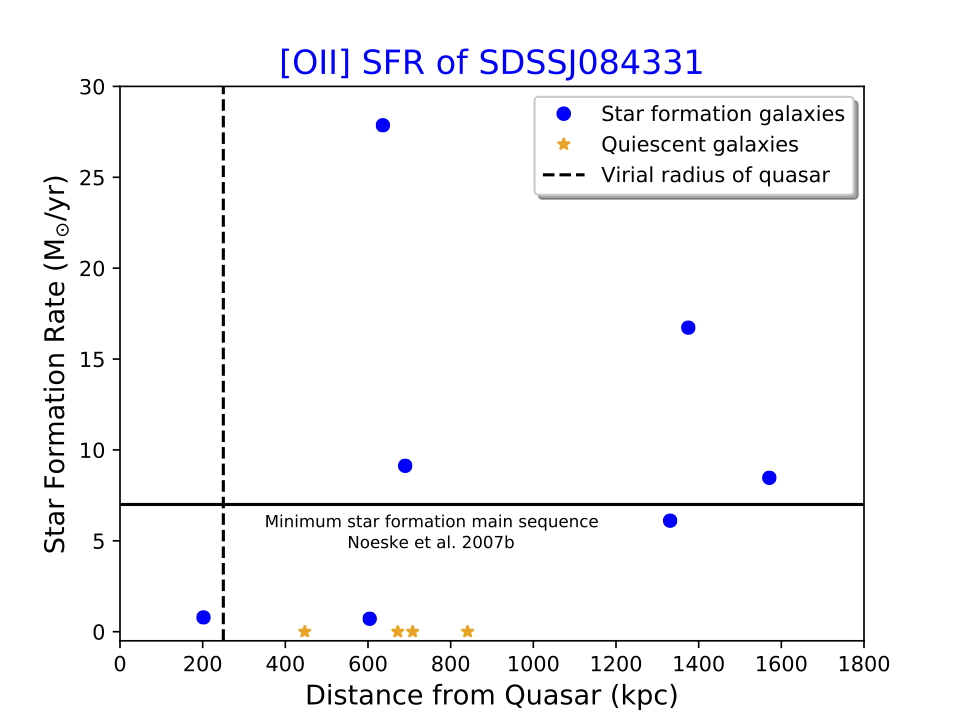The Undergraduate Research series is where we feature the research that you’re doing. If you are an undergraduate that took part in an REU or similar astro research project and would like to share this on Astrobites, please check out our submission page for more details. We would also love to hear about your more general research experience!

Cynthia Ibrahim
San Diego State University
Cynthia Ibrahim, a fourth-year Astronomy student at SDSU, conducted this research during her summer internship at Carnegie Observatories under her mentor Greg Walth. The research was presented at the 237th AAS meeting online in January 2021.
One way of studying galaxy evolution is to look at why quasars are more luminous when there is cool gas around them, or in their circumgalactic medium (CGM). The CGM is the gas outside the disk of a galaxy and within its virial radius. We suspect that what is driving the luminosity in the quasars is that nearby galaxies are interacting with the quasar by either dynamically disturbing the quasar’s CGM or supplying their own CGM gas to feed the quasar.
In order to answer this question, we observed 64 quasar fields with the Hubble Space Telescope in order to identify galaxies near each quasar that could reveal evidence of an interaction. Each field has multiple galaxies and two quasars; one background quasar is just used as a “flashlight” to probe gas from the foreground quasar, which is how we measure distances to the nearby galaxies. From this sample we observed 19 fields with Magellan/LDSS3 to determine the redshift and the nebular emission line properties of the nearby galaxies with lines such as [OII], [OIII], H-alpha and H-beta. We then use the nebular emission lines as a way to trace enhanced star formation from the potential interaction.
In my case study of the field SDSSJ084331, I found 7 galaxies within the redshift range of the quasar (z = 0.70, see Figure 1). This is one of the quasar fields selected that has cool gas (with MgII absorption detected) where we might expect to find evidence of a merger. Using [OII] we can estimate their star formation rates (Kennicutt 1998, Kewley et al. 2004) as a function of distance to the quasar. We were not able to conclude that there is a relationship between galaxy distance from the quasar and their star formation rates from our case study and it is likely that we will need the full spectroscopic sample to gain more leverage in answering our questions such as “is there evidence of an interaction” and “why is the quasar more luminous?”.

Astrobite edited by: Michael Hammer




